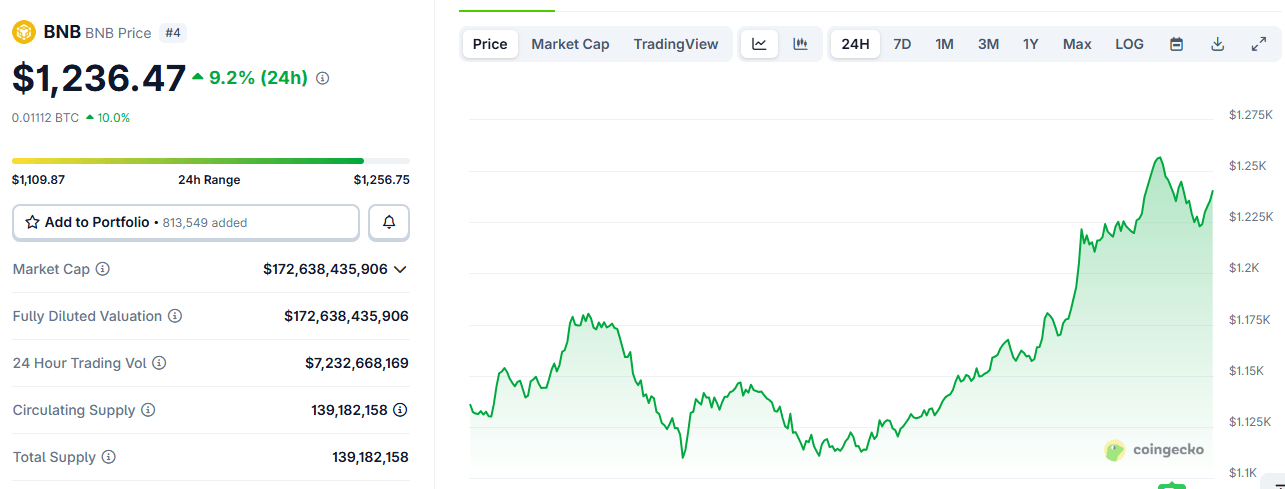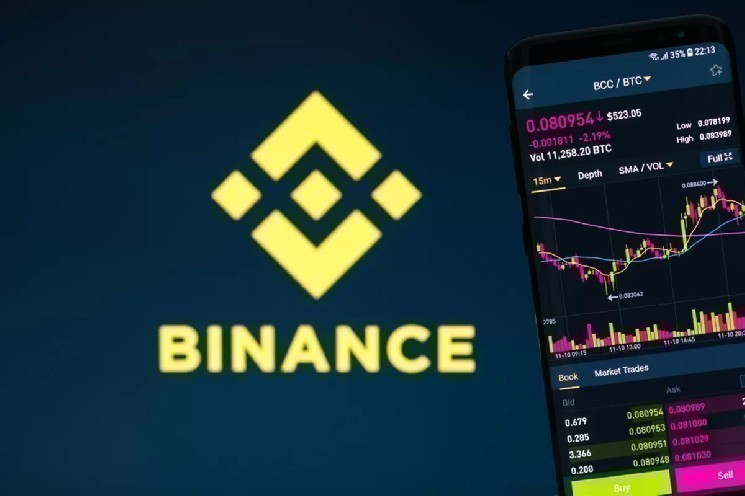Following a brief market-wide dip on October 10, BNB swiftly rebounded, emerging as the only high-cap altcoin to fully recover. While the rally has attributed to the growing appeal of the BNB Chain, experts emphasized that the chain’s long-term relevance will hinge on its ability to strengthen and evolve its underlying “trust architecture.”
BNB’s Rapid Market Recovery
After briefly dipping alongside the broader crypto market on Oct. 10, BNB quickly resumed its rally, overtaking XRP and USDT at the start of the week. According to market data, BNB traded around $1,100 on Oct. 11 at 6:30 a.m. EST, then surged more than 10% to reach $1,256 by 8:30 a.m. EST the following day.
At that price BNB was just 8% below its all-time high of $1,330.51 set on Oct. 8. The rally boosted BNB’s market capitalization from under $154 billion to $173.2 billion in just over 24 hours, solidifying its position as the fourth-largest crypto asset and bringing it within striking distance of USDT. Notably, BNB was the only high-cap altcoin to fully recover from the dip.

In contrast, other major altcoins like ethereum ( ETH) and XRP remained flat or posted negative gains. BNB’s market-defying performance has confounded analysts and sparked intense speculation across social media, where users debated the underlying drivers of the rally. The chatter prompted Binance founder and former CEO Changpeng Zhao to publicly dismiss claims of market manipulation.
Meanwhile, some experts interviewed by Bitcoin.com News attributed BNB’s surge to developments on the BNB Chain, which appears to be attracting liquidity from competing networks. Max Sandy, head of product at Ramp Network, cited low fees, robust DEX activity, and renewed developer incentives as key factors drawing capital from other chains to BNB Chain. He emphasized that when a project evolves from hype to habit, its staying power increases.
“From our vantage point at Ramp Network, where we power access across multiple chains, these rotations are healthy. They push every ecosystem to compete on real fundamentals: better UX, reliability, and security for users,” Sandy said.
Andrei Grachev, managing partner at DWF Labs, agreed that BNB Chain is experiencing a surge in capital inflows but cautioned that the momentum appears driven more by short-term incentives—such as airdrops, speculative flows, and meme activity—than by long-term infrastructure or compliance strategy.
“Retention, however, depends on trust architecture such as custody clarity, compliance frameworks, and modular financial tooling. Those elements are still evolving across the BNB stack,” Grachev explained.
The Critical Role of Regulatory Compliance
Grachev also stressed the importance of regulatory alignment, warning that without it, BNB Chain’s dominance may be viewed as part of a speculative cycle rather than a fundamental shift in Layer 1 leadership.
Sandy echoed this sentiment, noting that scalability and compliance will likely shape BNB Chain’s future. Technically, a roadmap toward faster finality and potential Layer-2 or modular extensions could help sustain throughput. On the regulatory front, he added:
“If handled well, tighter oversight could make the ecosystem more attractive to institutional players; if not, it could slow experimentation.”
Ultimately, like other blockchain ecosystems, BNB Chain must strike a balance between open innovation and credible compliance if it hopes to maintain long-term relevance, Sandy added.








